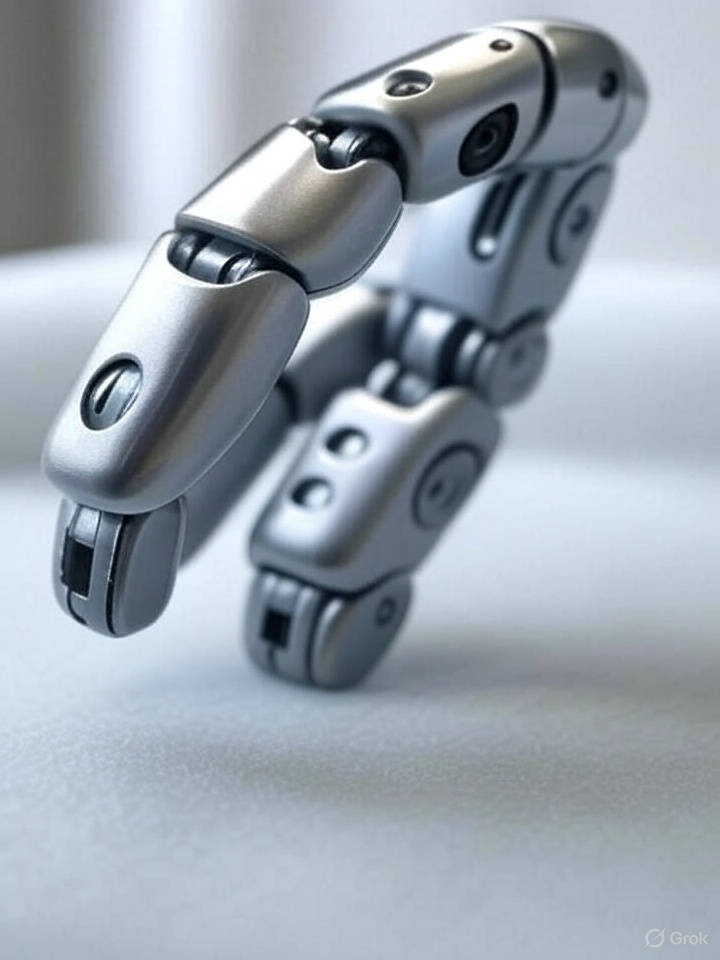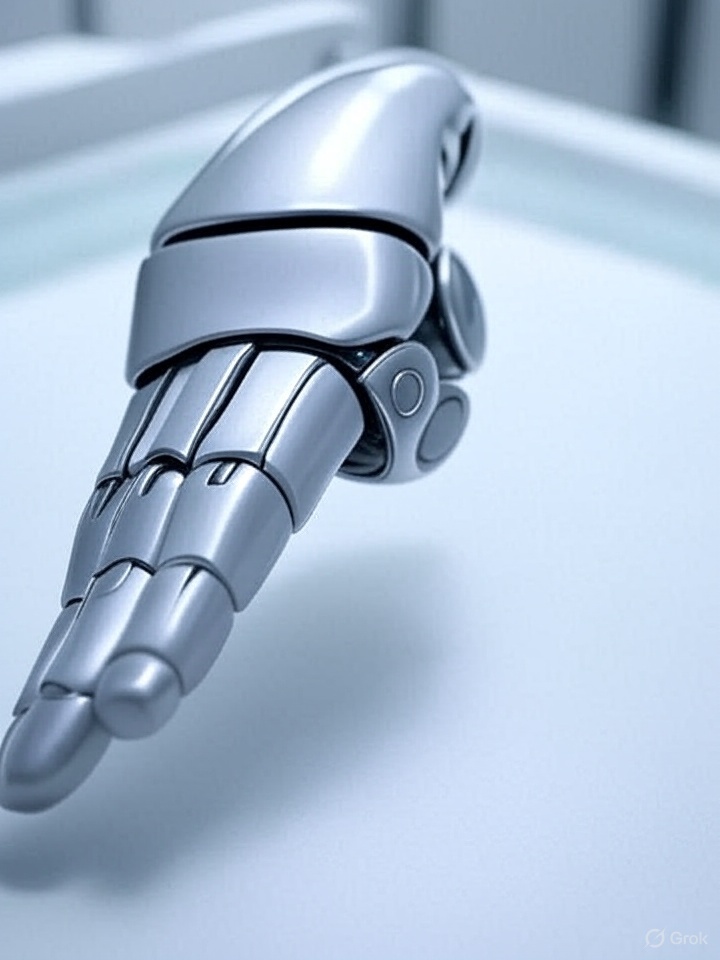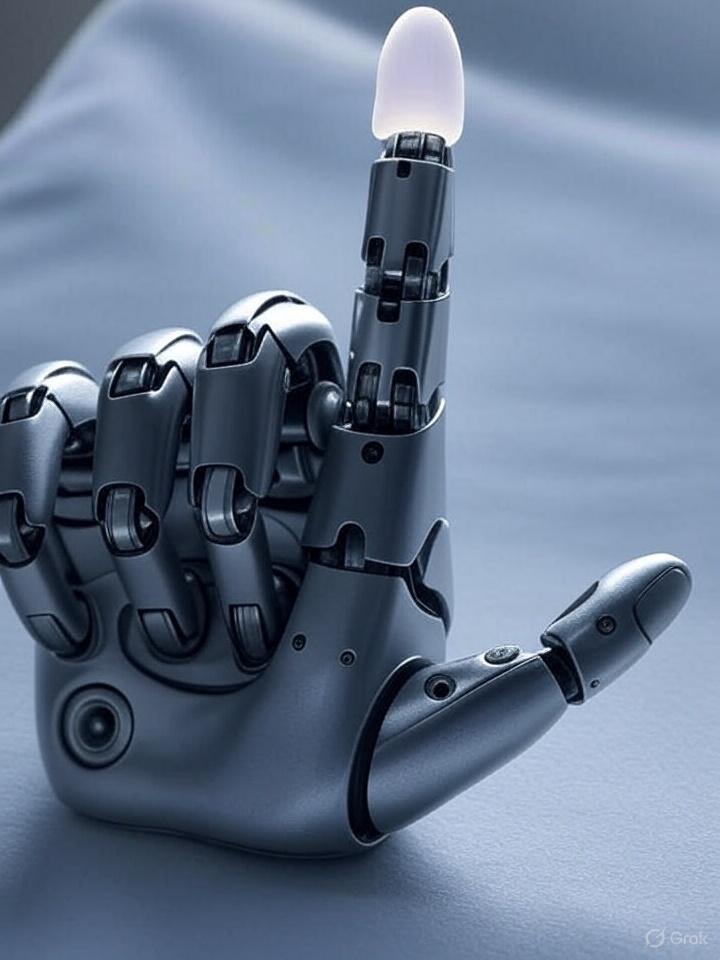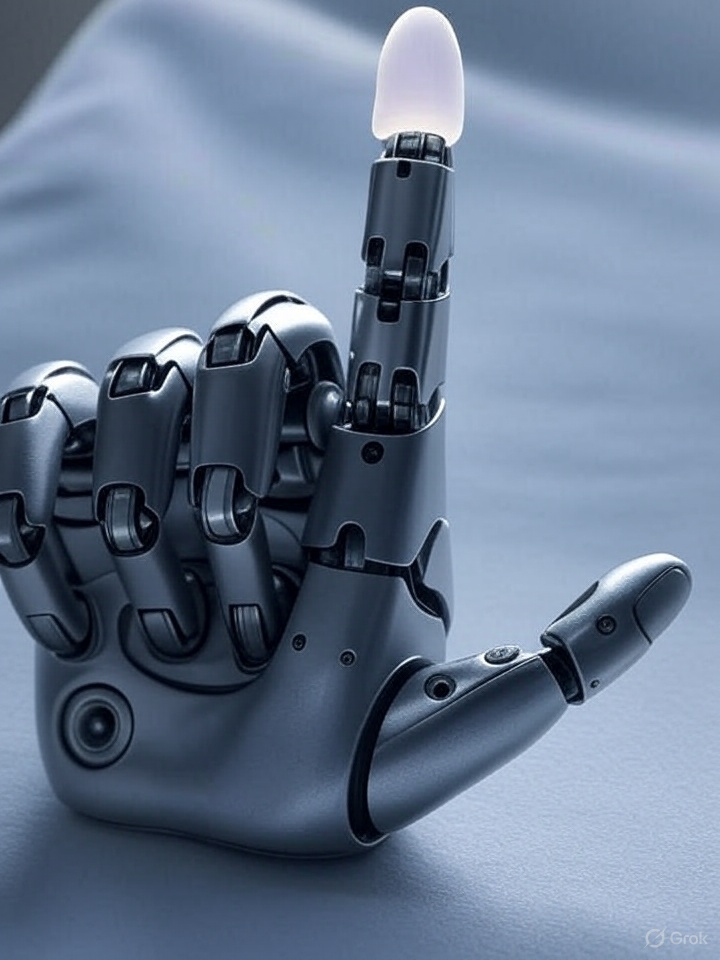For many men over 50, the annual prostate exam is a necessary but often dreaded procedure. It’s a critical screening for early detection of prostate cancer and other health issues, yet the experience can be uncomfortable — both physically and emotionally. However, a groundbreaking invention may change that.
Scientists have developed a robotic finger, dubbed the "robo-finger," designed to perform this delicate procedure with greater precision, sensitivity, and efficiency than a human doctor. Here’s how this innovation could revolutionize routine medical checkups.
A High-Tech Solution to an Age-Old Procedure
 The robo-finger, created using advanced 3D-printing technology, is a sleek, anatomically accurate device that mimics the shape and functionality of a human finger. What sets it apart is its integration with artificial intelligence (AI).
The robo-finger, created using advanced 3D-printing technology, is a sleek, anatomically accurate device that mimics the shape and functionality of a human finger. What sets it apart is its integration with artificial intelligence (AI).
The device is equipped with sensors that allow it to detect abnormalities in the prostate gland with remarkable accuracy. Unlike a human examiner, the robo-finger can analyze tissue density, texture, and size in real time, providing instant feedback to medical professionals.
The AI system guiding the robo-finger has been trained on thousands of prostate exams, enabling it to identify potential issues—like early signs of cancer, benign prostatic hyperplasia (BPH), or infections — more consistently than even the most experienced doctors.
Additionally, the device operates with a level of precision that minimizes discomfort. Its movements are calculated and smooth, reducing the risk of unnecessary pressure or abrupt motions that can cause pain during the exam.
Addressing the Emotional Barrier
One of the biggest hurdles for patients undergoing a prostate exam is the emotional discomfort and embarrassment associated with the procedure. For many, the idea of a doctor performing a manual exam can feel invasive and awkward. The robo-finger aims to alleviate this by removing the human element from the equation. Patients interact with a machine, which can make the experience feel less personal and more clinical — in a good way.
Dr. Elena Markov, a lead researcher on the project, explains, “Our goal was to create a tool that not only improves diagnostic accuracy but also makes patients feel more at ease. Many men delay or avoid prostate screenings due to embarrassment. We hope the robo-finger encourages more people to prioritize their health.”
 Also read:
Also read:
- While You’re Debating a Quasa Rewards Project, Kids Are Selling Merch on Roblox—Digital and Physical
- Apple’s Free Sleep Playlist Is a Game-Changer for Your Brain
- Google to Integrate Gemini AI into TVs, Watches, and Cars
How It Works
The robo-finger is a compact device, roughly the size of a human finger, with a smooth, biocompatible surface to ensure patient safety and comfort. It’s connected to a small robotic arm that allows for precise control.
During the procedure, the patient lies on an examination table, just as they would for a traditional exam. The robo-finger, guided by AI, is gently inserted to perform the screening. The entire process takes less than a minute — faster than most manual exams.
The device’s sensors collect data and transmit it to a computer, where the AI analyzes the results in real time. If any abnormalities are detected, the system flags them for further investigation, such as a biopsy or imaging tests. Doctors can review the AI’s findings and discuss them with the patient immediately after the procedure.
Benefits and Future Implications
 The robo-finger offers several advantages over traditional methods. First, its precision reduces the likelihood of false negatives, ensuring that potential issues are caught early.
The robo-finger offers several advantages over traditional methods. First, its precision reduces the likelihood of false negatives, ensuring that potential issues are caught early.
Second, the speed and gentleness of the procedure make it more tolerable for patients. Finally, the device’s consistency eliminates the variability that can occur with human examiners, whose skill levels may differ.
Beyond prostate exams, researchers believe the technology could be adapted for other medical procedures that require delicate internal examinations, such as colonoscopies or gynecological screenings.
The use of 3D printing also makes the robo-finger cost-effective to produce, potentially increasing access to advanced diagnostics in underserved areas.
A Step Toward Better Health
While the idea of a robotic finger being inserted “there” might sound futuristic—or even a bit unsettling—the robo-finger represents a significant step forward in medical technology. By combining AI, robotics, and 3D printing, scientists have created a tool that prioritizes both patient comfort and diagnostic accuracy. For the millions of men who need regular prostate screenings, this invention could make the difference between early detection and a missed diagnosis.
As the robo-finger undergoes further testing and regulatory approval, it’s poised to become a game-changer in routine healthcare. The next time your doctor recommends a prostate exam, you might just find yourself face-to-face with a high-tech finger that’s ready to make the experience quicker, easier, and a little less awkward.






